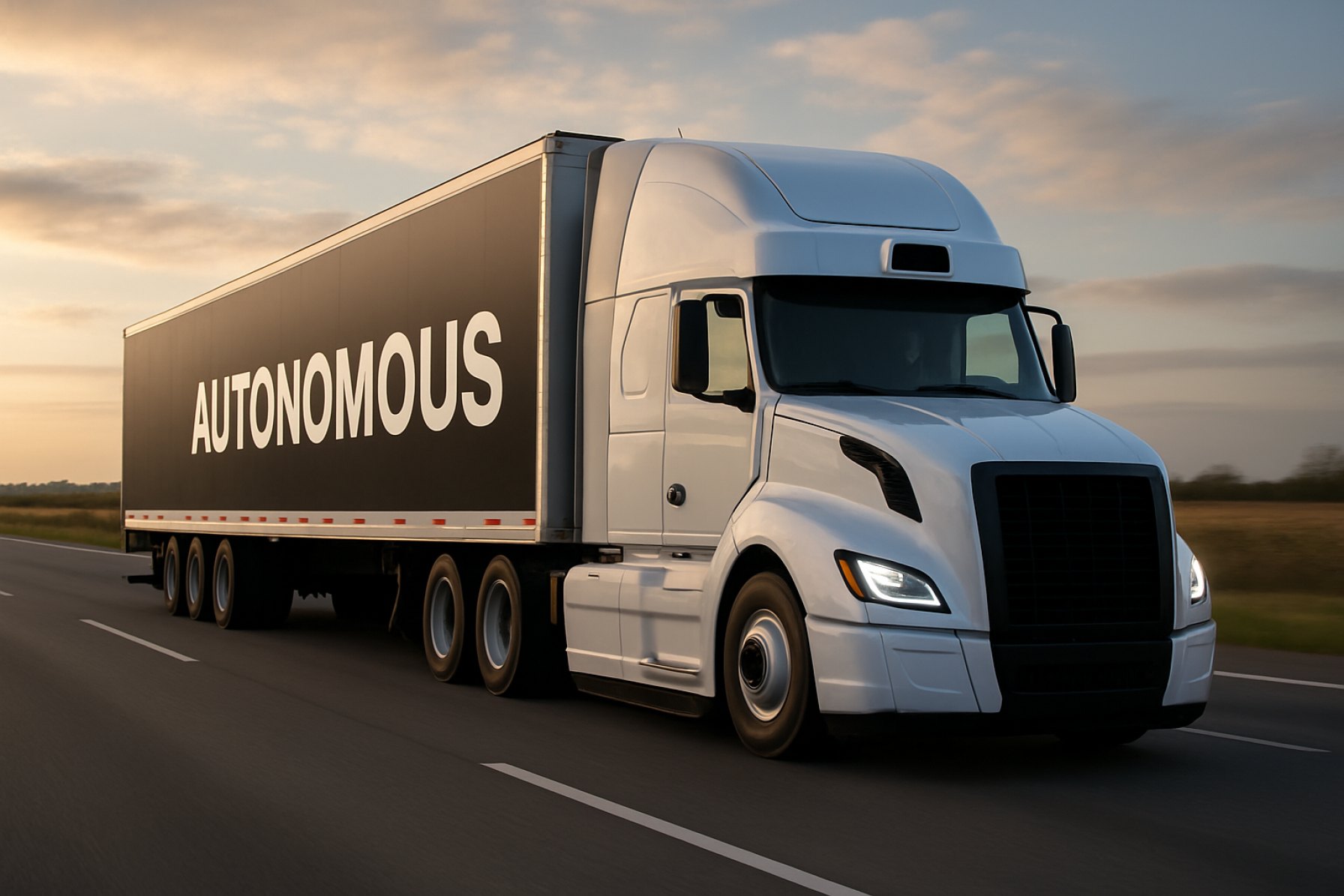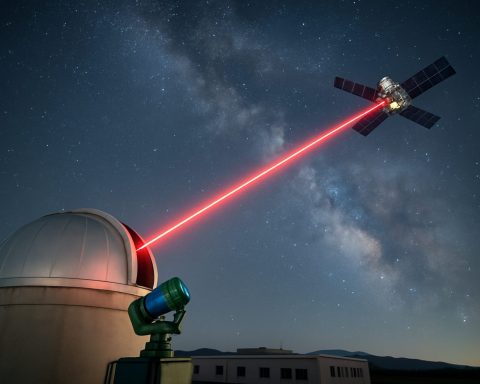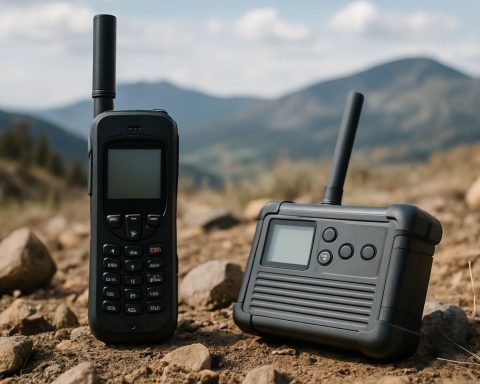Heavy Vehicle Autonomy Systems in 2025: Transforming Logistics, Safety, and Efficiency for the Next Decade. Explore the Technologies, Market Forces, and Industry Leaders Shaping the Future of Autonomous Trucks and Buses.
- Executive Summary: Key Trends and Market Outlook (2025–2030)
- Market Size, Growth Rate, and Forecasts: 2025–2030
- Core Technologies Powering Heavy Vehicle Autonomy
- Leading OEMs and Technology Providers (e.g., daimlertruck.com, volvoautonomoussolutions.com, tu.simple.com)
- Regulatory Landscape and Industry Standards (e.g., nhtsa.gov, unece.org)
- Deployment Scenarios: Freight, Public Transit, and Mining
- Safety, Cybersecurity, and Reliability Challenges
- Investment, M&A, and Strategic Partnerships
- Regional Analysis: North America, Europe, Asia-Pacific
- Future Outlook: Opportunities, Barriers, and Disruptive Innovations
- Sources & References
Executive Summary: Key Trends and Market Outlook (2025–2030)
The heavy vehicle autonomy sector is entering a pivotal phase between 2025 and 2030, marked by accelerated technological advancements, regulatory evolution, and expanding commercial deployments. Autonomous systems for trucks, buses, and specialized vehicles are transitioning from pilot projects to early-stage commercialization, driven by the promise of improved safety, operational efficiency, and cost reduction.
Key industry players are intensifying their efforts to bring Level 4 (highly automated, driverless under certain conditions) solutions to market. Daimler Truck and Volvo Trucks are leading the charge in Europe and North America, with both companies investing heavily in autonomous driving technology and strategic partnerships. Daimler Truck, through its Torc Robotics subsidiary, is conducting extensive on-road testing of autonomous trucks in the United States, targeting commercial launch in the latter half of the decade. Similarly, Volvo Trucks is piloting autonomous solutions for hub-to-hub freight and mining applications, with a focus on scalable deployment.
In the United States, PACCAR is collaborating with technology providers to integrate advanced autonomy into its Kenworth, Peterbilt, and DAF brands. Meanwhile, Navistar is working with autonomous software developers to accelerate the adoption of self-driving systems in long-haul trucking. These efforts are complemented by technology firms such as Aurora Innovation and TuSimple, which are developing full-stack autonomous driving platforms and forging partnerships with OEMs for real-world deployment.
The Asia-Pacific region is also witnessing significant momentum. Foton Motor and FAE Group are advancing autonomous heavy vehicle programs, particularly in logistics and port operations. China’s regulatory environment is evolving to support large-scale autonomous vehicle testing and commercial use, positioning the region as a major growth market.
Industry data suggests that by 2030, autonomous heavy vehicles could account for a meaningful share of new truck sales in select corridors and use cases, particularly in freight, mining, and port logistics. Regulatory harmonization, safety validation, and infrastructure upgrades remain critical challenges, but ongoing collaboration between manufacturers, technology providers, and government agencies is expected to accelerate progress.
- Major OEMs are targeting commercial launches of Level 4 autonomous trucks by 2027–2028.
- Strategic partnerships between vehicle manufacturers and technology firms are proliferating.
- Asia-Pacific and North America are emerging as leading regions for early adoption and regulatory support.
- Operational pilots are expanding from controlled environments to public roads and complex logistics networks.
Overall, the outlook for heavy vehicle autonomy systems from 2025 to 2030 is one of cautious optimism, with the sector poised for transformative growth as technology matures and regulatory frameworks adapt.
Market Size, Growth Rate, and Forecasts: 2025–2030
The market for heavy vehicle autonomy systems—encompassing autonomous trucks, buses, and off-highway vehicles—is poised for significant expansion between 2025 and 2030. This growth is driven by advances in sensor technology, artificial intelligence, regulatory progress, and increasing demand for logistics efficiency. As of 2025, several leading manufacturers and technology providers are actively piloting and deploying Level 4 (highly automated) and, in limited cases, Level 5 (fully autonomous) solutions in controlled environments.
Key industry players such as Daimler Truck, Volvo Trucks, and PACCAR (parent of Kenworth, Peterbilt, and DAF) are investing heavily in autonomous vehicle platforms. Daimler Truck has announced ongoing trials of its Freightliner Cascadia equipped with autonomous driving systems in the United States, targeting commercial deployment by the late 2020s. Volvo Trucks is similarly advancing its Vera and Autonomous Transport Solution projects, focusing on hub-to-hub and confined site operations.
In the off-highway segment, companies like Caterpillar and Komatsu are scaling up autonomous haulage systems for mining and construction. Caterpillar reports that its autonomous trucks have already moved over 5 billion tonnes of material globally, and the company is expanding its autonomous offerings to new markets and vehicle classes.
The market size for heavy vehicle autonomy systems in 2025 is estimated to be in the low single-digit billions (USD), with North America and China as leading regions for early adoption. Growth rates are expected to accelerate as regulatory frameworks mature and as pilot projects transition to commercial-scale deployments. By 2030, the market is projected to reach several tens of billions of dollars, with compound annual growth rates (CAGR) in the high teens to low twenties percent range, depending on the segment and region.
- On-road autonomous trucks: Anticipated to see the fastest growth, especially in long-haul and hub-to-hub logistics, as demonstrated by partnerships between OEMs and technology firms.
- Off-highway vehicles: Mining and construction sectors will continue to lead in early adoption due to controlled environments and clear productivity benefits.
- Regulatory and infrastructure developments: Progress in standards and dedicated autonomous vehicle corridors will be critical to unlocking broader market growth.
Overall, the outlook for heavy vehicle autonomy systems from 2025 to 2030 is robust, with major OEMs and technology suppliers accelerating investments and deployments. The sector is expected to transition from pilot and limited commercial operations to broader adoption, fundamentally reshaping logistics, mining, and construction industries worldwide.
Core Technologies Powering Heavy Vehicle Autonomy
Heavy vehicle autonomy systems are rapidly advancing, driven by a convergence of sensor technologies, artificial intelligence, and robust vehicle control architectures. As of 2025, the sector is witnessing significant deployments and pilot programs, particularly in logistics, mining, and freight transport. The core technologies underpinning these systems include high-resolution lidar and radar, advanced camera arrays, real-time data fusion, and sophisticated onboard computing platforms.
Sensor suites are foundational to autonomy, enabling vehicles to perceive their environment in diverse and challenging conditions. Companies such as Volvo Trucks and Daimler Truck have integrated multi-modal sensor arrays into their autonomous prototypes and pilot fleets. These systems combine lidar for precise 3D mapping, radar for long-range object detection, and cameras for visual recognition, all feeding into a central processing unit capable of real-time decision-making.
Artificial intelligence and machine learning algorithms are at the heart of autonomy, interpreting sensor data to identify obstacles, predict traffic behavior, and plan safe navigation paths. PACCAR, a major manufacturer of heavy-duty trucks, has partnered with leading technology firms to develop AI-driven control systems that enable Level 4 (highly automated) driving in controlled environments such as dedicated freight corridors and mining sites.
Connectivity and vehicle-to-everything (V2X) communication are increasingly important, allowing autonomous heavy vehicles to interact with infrastructure, other vehicles, and remote operators. Scania and MAN Truck & Bus are actively testing V2X-enabled platooning, where convoys of trucks travel closely together to improve efficiency and safety, coordinated by real-time wireless communication.
Robust computing hardware is essential to process the vast amounts of data generated by sensors and to run complex AI models. Companies like NVIDIA supply high-performance automotive-grade processors that are widely adopted in autonomous heavy vehicle platforms, supporting both perception and control tasks.
Looking ahead, the next few years are expected to see broader commercial deployments, especially in geofenced or private environments where regulatory hurdles are lower. The integration of over-the-air software updates and remote diagnostics will further enhance system reliability and adaptability. As these core technologies mature, the industry is poised for incremental expansion into public road operations, with safety, redundancy, and cybersecurity remaining top priorities for all stakeholders.
Leading OEMs and Technology Providers (e.g., daimlertruck.com, volvoautonomoussolutions.com, tu.simple.com)
The landscape of heavy vehicle autonomy systems in 2025 is defined by rapid technological progress, strategic partnerships, and a clear focus on scalable commercial deployment. Leading original equipment manufacturers (OEMs) and technology providers are investing heavily in autonomous solutions for trucks, buses, and specialized vehicles, aiming to address both logistics efficiency and safety.
Among the most prominent OEMs, Daimler Truck continues to advance its autonomous strategy through its dedicated Autonomous Technology Group. The company’s flagship Freightliner Cascadia, equipped with Level 4 autonomous driving capabilities, is being developed in collaboration with technology partners and is undergoing extensive real-world testing in the United States. Daimler Truck’s approach emphasizes redundancy in critical systems and a focus on hub-to-hub freight operations, with commercial pilots expected to expand in the next few years.
Similarly, Volvo Autonomous Solutions is accelerating its efforts in both on-road and off-road autonomy. Volvo’s Vera platform and autonomous transport solutions are being piloted in controlled environments such as ports and mining sites, with the company targeting broader deployment in logistics corridors by the mid-2020s. Volvo’s strategy includes partnerships with logistics providers and a focus on integrated service models, combining vehicle, software, and operational support.
On the technology provider front, TuSimple stands out as a pioneer in autonomous trucking. The company has developed a purpose-built autonomous driving system for Class 8 trucks and has completed multiple fully driverless runs on public roads. TuSimple’s partnerships with major OEMs and freight companies are aimed at commercializing autonomous freight corridors, with a focus on the U.S. Sun Belt and expansion into international markets. The company’s roadmap includes scaling up driver-out operations and integrating with fleet management systems.
Other notable players include PACCAR, which is collaborating with technology firms to integrate autonomous systems into its Kenworth, Peterbilt, and DAF brands, and Navistar, which is working with partners to develop autonomous-ready vehicle platforms. These OEMs are investing in sensor fusion, high-definition mapping, and fail-operational architectures to meet regulatory and safety requirements.
Looking ahead, the next few years are expected to see a transition from pilot projects to limited commercial deployments, particularly in freight and logistics applications where route predictability and operational control are high. The collaboration between OEMs and technology providers will be crucial in overcoming technical, regulatory, and operational challenges, setting the stage for broader adoption of heavy vehicle autonomy systems by the late 2020s.
Regulatory Landscape and Industry Standards (e.g., nhtsa.gov, unece.org)
The regulatory landscape for heavy vehicle autonomy systems is rapidly evolving as governments and industry bodies respond to technological advances and the growing deployment of autonomous trucks and buses. In 2025, the United States continues to play a leading role through the National Highway Traffic Safety Administration (NHTSA), which has issued guidance and voluntary frameworks for automated driving systems (ADS). NHTSA’s approach emphasizes safety assessment, data sharing, and collaboration with state authorities, while ongoing rulemaking efforts aim to address specific requirements for commercial vehicles, such as minimum performance standards and cybersecurity protocols.
Internationally, the United Nations Economic Commission for Europe (UNECE) is central to harmonizing regulations across borders. UNECE’s World Forum for Harmonization of Vehicle Regulations (WP.29) has established the UN Regulation No. 157, which sets out requirements for Automated Lane Keeping Systems (ALKS) and is being expanded to cover higher levels of automation and heavier vehicle classes. This regulatory framework is particularly influential in Europe and parts of Asia, where cross-border freight operations are common.
Industry standards are also being shaped by organizations such as the SAE International, whose J3016 taxonomy defines levels of driving automation and is widely referenced in both regulatory and commercial contexts. In 2025, manufacturers like Daimler Truck and Volvo Trucks are actively participating in pilot programs and industry consortia to validate autonomous systems under real-world conditions, often in partnership with technology providers and logistics companies. These pilots are informing both technical standards and regulatory best practices, particularly around operational design domains (ODDs), remote operation, and fail-safe mechanisms.
Looking ahead, the next few years are expected to see the introduction of more binding regulations for heavy vehicle autonomy, especially as commercial deployments scale up. The European Union is preparing to update its General Safety Regulation to include provisions for automated and connected heavy vehicles, while China is accelerating its own regulatory frameworks to support domestic innovation and international competitiveness. Industry stakeholders anticipate that harmonized standards and certification processes will be critical to enabling cross-border operations and ensuring public trust in autonomous heavy vehicles.
- Key regulatory bodies: NHTSA, UNECE, SAE International
- Leading manufacturers: Daimler Truck, Volvo Trucks
- Focus areas: safety standards, cross-border harmonization, cybersecurity, operational design domains
Deployment Scenarios: Freight, Public Transit, and Mining
Heavy vehicle autonomy systems are rapidly advancing across several key sectors, with deployment scenarios in freight, public transit, and mining shaping the landscape for 2025 and the years immediately following. Each sector presents unique operational environments and business cases, driving tailored approaches to autonomous technology integration.
In freight, autonomous trucking is moving from pilot projects to early commercial operations. Companies such as Daimler Truck and Volvo Trucks are leading the charge, with both manufacturers actively testing and, in some corridors, deploying Level 4 autonomous trucks. Daimler Truck has partnered with technology firms to develop the Freightliner Cascadia equipped with advanced autonomous systems, targeting hub-to-hub operations on highways. Similarly, Volvo Trucks is piloting autonomous solutions in North America and Europe, focusing on long-haul routes where driver fatigue and efficiency gains are most impactful. These deployments are expected to expand in 2025, particularly in regions with supportive regulatory frameworks and high freight demand.
Public transit is also witnessing significant progress in autonomous heavy vehicles, particularly in the form of self-driving buses and shuttles. Scania and Volvo Group are notable players, with both companies conducting real-world trials of autonomous buses in urban and suburban environments. Scania has launched pilot programs in partnership with public transport authorities, aiming to address labor shortages and improve service reliability. These pilots are expected to transition into limited commercial deployments by 2025, especially in controlled environments such as dedicated bus lanes or BRT (Bus Rapid Transit) systems.
The mining sector remains at the forefront of heavy vehicle autonomy, with large-scale deployments already underway and further expansion anticipated. Caterpillar and Komatsu have established themselves as global leaders, supplying autonomous haulage systems (AHS) to major mining operations. Caterpillar reports that its autonomous trucks have moved over 6 billion tonnes of material, demonstrating the maturity and scalability of these systems. Komatsu continues to expand its AHS footprint, with new deployments planned in Australia, South America, and North America through 2025. The controlled, private nature of mine sites accelerates adoption, with safety and productivity gains driving further investment.
Looking ahead, the next few years will see increased integration of autonomous heavy vehicles in these sectors, with regulatory developments, infrastructure readiness, and continued technological refinement shaping the pace and scale of deployment.
Safety, Cybersecurity, and Reliability Challenges
The deployment of heavy vehicle autonomy systems in 2025 is marked by significant advancements, but also by persistent challenges in safety, cybersecurity, and reliability. As leading manufacturers and technology providers accelerate real-world pilots and limited commercial rollouts, the industry faces heightened scrutiny from regulators, insurers, and the public.
Safety remains the foremost concern. Autonomous trucks and buses must operate in complex, dynamic environments, often alongside human drivers and vulnerable road users. In 2025, companies such as Daimler Truck and Volvo Trucks are conducting extensive on-road testing of SAE Level 4 systems, with safety drivers still present in most deployments. These tests focus on validating sensor fusion, redundancy in braking and steering, and fail-operational architectures. For example, Daimler Truck’s autonomous Freightliner Cascadia integrates multiple lidar, radar, and camera systems to ensure robust perception and response to edge cases. Despite these efforts, incidents involving disengagements and near-misses continue to be reported, underscoring the need for further refinement and transparent safety metrics.
Cybersecurity is an escalating priority as connectivity and remote operation become integral to autonomous heavy vehicles. The attack surface expands with vehicle-to-everything (V2X) communications, over-the-air updates, and cloud-based fleet management. In 2025, manufacturers like PACCAR and Navistar are investing in end-to-end encryption, intrusion detection systems, and secure boot processes to mitigate risks of unauthorized access or malicious interference. Industry bodies such as the SAE International are updating standards (e.g., J3061) to address the unique cybersecurity needs of commercial vehicles. However, the rapid evolution of threat vectors means that ongoing vigilance and incident response capabilities are essential.
Reliability is critical for commercial viability. Heavy vehicle autonomy systems must demonstrate high uptime and resilience to hardware or software faults. In 2025, companies like Volvo Trucks and Daimler Truck are deploying redundant power supplies, fail-safe actuators, and real-time health monitoring to minimize unplanned downtime. Nonetheless, the complexity of integrating autonomous stacks with legacy vehicle platforms and diverse operating conditions (weather, road quality, cargo types) presents ongoing reliability challenges.
Looking ahead, the next few years will see increased collaboration between OEMs, technology suppliers, and regulatory agencies to establish harmonized safety and cybersecurity frameworks. The industry’s ability to address these challenges will be pivotal in achieving widespread adoption and public trust in heavy vehicle autonomy systems.
Investment, M&A, and Strategic Partnerships
The landscape of investment, mergers and acquisitions (M&A), and strategic partnerships in heavy vehicle autonomy systems is rapidly evolving as the sector matures and commercialization accelerates. In 2025, significant capital continues to flow into autonomous trucking and off-highway vehicle technology, with established OEMs, technology startups, and major suppliers all vying for leadership.
One of the most prominent players, Daimler Truck, has maintained its commitment to autonomous trucking through its subsidiary Torc Robotics. Daimler Truck has deepened its collaboration with Torc, focusing on Level 4 autonomous driving for long-haul applications. The company has also announced ongoing investments in sensor technology and AI, and is actively seeking further partnerships to accelerate deployment in North America and Europe.
Similarly, Volvo Trucks has expanded its strategic alliances, notably with Aurora Innovation, to develop and commercialize autonomous transport solutions. The partnership leverages Volvo’s manufacturing and logistics expertise with Aurora’s self-driving technology, aiming for scalable deployment in the U.S. market. Volvo has also signaled openness to additional collaborations, particularly in telematics and fleet management integration.
In the U.S., PACCAR has continued to invest in autonomous vehicle R&D, working with multiple technology partners to integrate advanced driver-assistance and full autonomy into its Kenworth, Peterbilt, and DAF brands. PACCAR’s approach includes both direct investment and targeted acquisitions of software and sensor companies to strengthen its in-house capabilities.
On the supplier side, ZF Friedrichshafen AG and Robert Bosch GmbH are actively acquiring startups and forming joint ventures to expand their portfolios in autonomous driving hardware and software. ZF, for example, has invested in AI-based perception systems and is collaborating with OEMs to deliver integrated autonomy solutions for commercial vehicles.
The off-highway segment is also seeing increased activity. CNH Industrial and Deere & Company are investing heavily in autonomous tractors and construction equipment, often through the acquisition of robotics and AI startups or by forming strategic partnerships with technology providers.
Looking ahead, the next few years are expected to bring further consolidation as companies seek scale and technological breadth. Strategic partnerships will likely intensify, especially as regulatory clarity improves and pilot deployments transition to commercial operations. The sector’s investment momentum is underpinned by the promise of improved safety, efficiency, and cost savings, making heavy vehicle autonomy a focal point for both traditional industry leaders and disruptive entrants.
Regional Analysis: North America, Europe, Asia-Pacific
The deployment and development of heavy vehicle autonomy systems—encompassing autonomous trucks, buses, and industrial vehicles—are advancing at different paces across North America, Europe, and Asia-Pacific, shaped by regulatory frameworks, infrastructure readiness, and industry partnerships.
North America remains at the forefront of heavy vehicle autonomy, driven by a combination of technological innovation, regulatory pilots, and strong logistics demand. In the United States, several leading manufacturers and technology firms are conducting large-scale autonomous truck pilots on interstate highways. Daimler Truck (through its Freightliner brand) and PACCAR (with Kenworth and Peterbilt) are collaborating with autonomy technology providers to integrate Level 4 systems into their vehicles. Torc Robotics, a subsidiary of Daimler Truck, is actively testing autonomous trucks in real-world freight operations. Meanwhile, Volvo Trucks is piloting autonomous solutions in both the US and Canada, focusing on hub-to-hub freight corridors. Regulatory support, such as state-level autonomous vehicle frameworks and federal interest in commercial vehicle automation, is expected to accelerate commercial deployments by 2025 and beyond.
Europe is advancing with a focus on safety, sustainability, and cross-border harmonization. The European Union’s regulatory environment emphasizes strict safety validation and interoperability, which has led to several multi-country pilot projects. Scania and MAN Truck & Bus (both part of the TRATON Group) are testing autonomous trucks in Sweden and Germany, including platooning and hub-to-hub operations. DAF Trucks is also involved in autonomous vehicle research, particularly in logistics hubs and controlled environments. The EU’s Digital Transport and Logistics Forum and cross-border initiatives are expected to facilitate broader adoption, with commercial pilots anticipated to expand in the next few years.
Asia-Pacific is witnessing rapid progress, particularly in China and Japan, where government support and industrial policy are accelerating adoption. FAW Group and Dongfeng Motor Corporation are deploying autonomous trucks in logistics parks and on select highway routes in China, supported by national smart transportation initiatives. In Japan, Isuzu Motors and Hino Motors are piloting autonomous buses and trucks, with a focus on addressing driver shortages and improving logistics efficiency. The region’s emphasis on smart city integration and digital infrastructure is expected to drive significant growth in heavy vehicle autonomy through 2025 and the following years.
Overall, while North America leads in open-road pilots, Europe prioritizes regulatory harmonization, and Asia-Pacific leverages state-driven initiatives, all regions are poised for increased commercial deployment of heavy vehicle autonomy systems in the near term.
Future Outlook: Opportunities, Barriers, and Disruptive Innovations
The future of heavy vehicle autonomy systems is poised for significant transformation as the industry moves through 2025 and into the latter part of the decade. The sector is witnessing a convergence of technological advancements, regulatory evolution, and shifting market demands, all of which are shaping opportunities, barriers, and disruptive innovations.
Opportunities in the near term are being driven by the increasing adoption of Level 4 autonomous systems in controlled environments such as logistics hubs, mining sites, and dedicated freight corridors. Companies like Volvo Trucks and Daimler Truck are actively piloting and, in some cases, deploying autonomous heavy vehicles for hub-to-hub freight and industrial applications. Volvo Trucks has demonstrated autonomous solutions in mining and port operations, while Daimler Truck continues to develop its Freightliner Inspiration and Cascadia platforms with advanced driver assistance and autonomy features. These deployments are expected to expand as the cost of sensors and computing power decreases, and as fleet operators seek efficiency gains and solutions to driver shortages.
Barriers remain, particularly in the form of regulatory uncertainty and the technical challenges of achieving reliable autonomy in complex, mixed-traffic environments. While the technology for limited autonomy is maturing, full-scale deployment on public roads is constrained by the need for harmonized safety standards and robust validation processes. Organizations such as the SAE International are working to standardize definitions and testing protocols, but regulatory frameworks vary significantly across regions, slowing cross-border adoption. Additionally, cybersecurity and data privacy concerns are increasingly prominent as vehicles become more connected and reliant on cloud-based systems.
Disruptive innovations are emerging from both established OEMs and new entrants. PACCAR is integrating autonomous technology into its Kenworth and Peterbilt brands, while technology firms like Torc Robotics (a subsidiary of Daimler Truck) are collaborating with manufacturers to accelerate the commercialization of self-driving trucks. Meanwhile, Caterpillar continues to lead in autonomous off-highway vehicles, with large-scale deployments in mining that serve as a blueprint for broader adoption.
Looking ahead, the next few years will likely see a gradual scaling of autonomous heavy vehicle operations in well-defined use cases, with incremental progress toward broader public road deployment. The interplay between regulatory progress, technological innovation, and industry collaboration will determine the pace and scope of disruption in this sector.
Sources & References
- Daimler Truck
- Volvo Trucks
- PACCAR
- Navistar
- Aurora Innovation
- Foton Motor
- Scania
- MAN Truck & Bus
- NVIDIA
- Volvo Autonomous Solutions
- National Highway Traffic Safety Administration
- Volvo Trucks
- Volvo Group
- ZF Friedrichshafen AG
- Robert Bosch GmbH
- CNH Industrial
- Deere & Company
- Torc Robotics
- DAF Trucks
- FAW Group
- Dongfeng Motor Corporation
- Isuzu Motors
- Hino Motors











